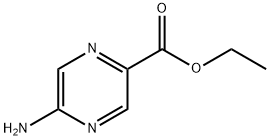Val Kilmer, the actor who once donned the iconic Batsuit as Batman in "Batman Forever," has died at the age of 65. His passing has left a void in the entertainment world, where he was known for his versatile performances and unique charisma. Kilmer's career spanned from rock-star roles to intense dramas, and he left an indelible mark on Hollywood. But beyond his acting, one can't help but wonder about the intricate craftsmanship behind the Batman suit that Kilmer brought to life on the big screen. How is this legendary garment actually made?
Val Kilmer, Who Once Played Batman, Has Passed Away? Do You Know How Batman's Suit Is Made?
Related Encyclopedia
Related Products More >
-
- CNY equest For Quotation
-
- CNY equest For Quotation
-
- CNY equest For Quotation
-
- 25085-99-8
- USD 490.0000
- 240kg
-
- 9009-54-5
- equest For Quotation
- A component : 250kg/drums,25kg/barrel,1500kg/IBC tanks B component : 250kg/drums
-
- 9009-54-5
- equest For Quotation
- as require
-
- 9009-54-5
- equest For Quotation
- 25kg/drum



 沪ICP备2021018848号-5
沪ICP备2021018848号-5

The Batman suit, as seen in "Batman Forever," is a marvel of modern design and engineering. It is crafted from a combination of materials that provide both flexibility and protection. The base layer often consists of a spandex or Lycra blend, which offers stretch and comfort, allowing the actor to move freely while performing stunts. This material is crucial for maintaining the agility and dynamic movements that Batman is known for.
Over the spandex layer, there is typically a protective padding made from materials such as polyethylene foam or closed-cell foam. This padding serves to cushion impacts, protecting the actor from potential injuries during action scenes. The foam is strategically placed in areas such as the chest, back, and knees to offer maximum protection where it is needed most.
The outer shell of the Batman suit is often made from a durable fabric like nylon or polyester. This layer provides additional protection against abrasions and punctures. In some versions of the suit, Kevlar is woven into the fabric to enhance its strength and resistance to tearing. Kevlar, a synthetic fiber known for its high tensile strength, is commonly used in bulletproof vests and other protective gear. Its inclusion in the Batman suit adds an extra layer of security for the actor, ensuring they can perform high-risk scenes with confidence.
The iconic cape and cowl of the Batman suit are also crafted with precision and care. The cape is usually made from a lightweight yet durable material such as nylon or polyester, treated to be wind-resistant and quick-drying. This allows for realistic movement and appearance in various weather conditions. The cowl, which covers the head and face, is designed to provide both anonymity and protection. It is often made from a combination of rubber and foam to ensure a snug fit and to protect the actor's face during stunts.
In addition to the physical materials, the Batman suit also incorporates advanced technology for added functionality. For instance, some versions of the suit include built-in communication devices, allowing the actor to stay in contact with the crew during filming. Temperature regulation systems may also be integrated to keep the actor comfortable in varying climates.
Kilmer's portrayal of Batman was not without its challenges. The suit, while impressive, was also restrictive and uncomfortable at times. Kilmer himself expressed mixed feelings about the role and the suit, stating that it was not his favorite part of his career. However, his performance brought a unique energy to the character, and the suit remains an iconic symbol of the Batman franchise.
As we reflect on Val Kilmer's life and career, it is fascinating to consider the craftsmanship and technology that go into creating such a legendary garment. The Batman suit is not just a piece of clothing; it is a testament to the ingenuity and dedication of the designers and engineers who bring these fictional heroes to life.
In the end, Val Kilmer's passing leaves us with many questions about the legacy he left behind. How will his performances continue to influence future generations of actors? And what new innovations will be introduced in the design of superhero suits in the years to come?
While discussing Batman, have you ever wondered how the iconic Batsuit is made? The modern Batsuits seen in movies are crafted using high-tech materials, including molded polyurethane, carbon fiber, and Kevlar. These materials provide flexibility and durability while ensuring protection for the actor during action scenes. Advanced 3D printing and special chemical coatings are often used to enhance the suit’s texture and appearance.
The base of the suit was a two - piece, full - length bodysuit crafted from breathable mesh fabric. This mesh not only provided comfort but also allowed for better air circulation during intense action scenes. It came with integrated gloves and a hood, which were crucial for a seamless look. Onto this base, black polyurethane - cast panels were carefully installed on the legs, torso, and neck. Polyurethane is a polymer material known for its durability and flexibility. It can be molded into various shapes, making it perfect for creating the protective yet form - fitting elements of the bat suit. The gloves were made of leather, which added a touch of authenticity and toughness. They were also equipped with carbon - fiber knuckle caps. Carbon fiber is a strong, lightweight material composed of carbon atoms. It has a high strength - to - weight ratio, which means it can provide excellent protection without adding excessive weight, allowing Batman to move freely while still having his hands safeguarded.
The iconic bat mask and chest armor were made from polyurethane as well. The mask, marked as "R7", and the upper - body armor, marked "14", were designed to be both intimidating and functional. The bat symbol on the chest armor was made of rubber and painted black, while the rubber - made bat belt had four belt bags secured with metal fittings and was given a copper - colored paint finish.
For the cape, a black artificial velvet was used. Velvet is a soft, luxurious fabric that gives the cape a flowing and dramatic look. It was modified from the one used in "Batman Begins" for the two sequels and was attached to the shoulders with screws. Completing the ensemble were a pair of leather motorcycle boots, which added to the tough and practical look of the suit.
In addition to the materials used in the movies, fans have also made their own versions of the Batman suit. For example, a student named Jackson Gordon raised funds to create a bat suit that could withstand punches, kicks, and even knife attacks. His suit was made of special materials that could absorb and distribute the force of an impact, not just rely on brute - force resistance.